Y-12 Blog
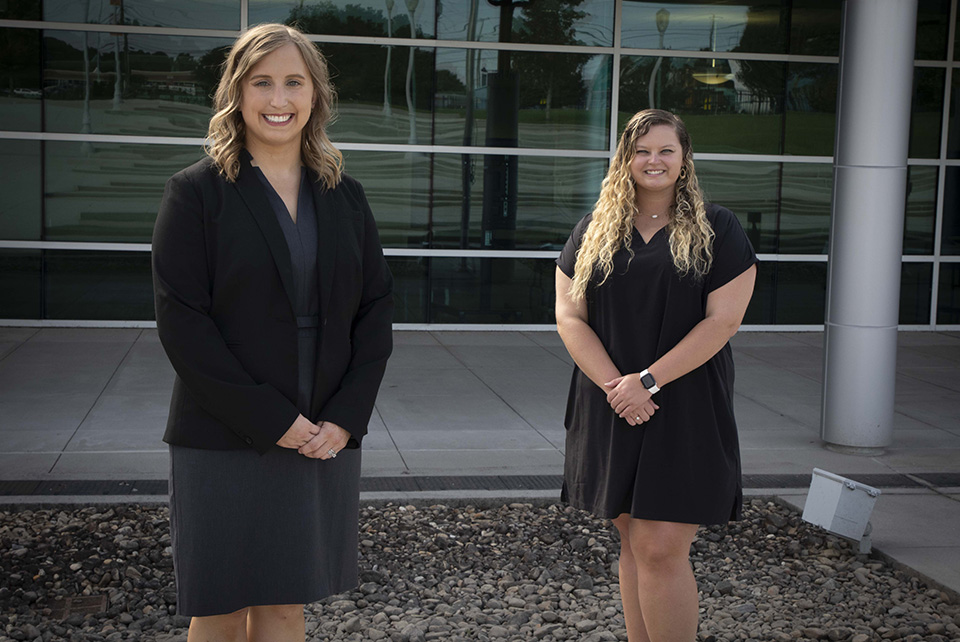
From left: Caitlin Hoch Nussbaum and Tori Smith are two of the University of Tennessee College of Law students who have been interning at Y-12.
For the past several years, the Technology Transfer Office has partnered with the University of Tennessee College of Law to give law students a unique opportunity to work with Y-12. The partnership is two fold — to help UT law students gain useful experience working in government contracting and intellectual property and to enhance the work of the Technology Transfer Office.
The partnership has been a huge success thus far, and its impact is highlighted in the overall efforts of Technology Transfer.
“Our relationship with the University of Tennessee College of Law is vital to the successful execution of the CNS Technology Transfer mission,” said Ashley Stowe, who leads the University Partnerships Programs and oversees the law interns for the Technology Transfer Office at Y-12.
The legal students work with inventors, research prior art, and conduct market surveys that enable Y-12 to translate new ideas into patentable language to support the best embodiment for submission to the patent office. They also inform Technology Transfer’s decision makers on which disclosures to pursue and help guide the marketing and commercialization strategy.
Stowe also notes that the program focuses on the strengths and interests of each individual during their time in the program.
“We leverage the students’ undergraduate discipline — whether it be an engineering discipline or business degree — to garner their enthusiasm in a particular area and maximize their intern experience,” said Stowe.
Caitlin Hoch Nussbaum is wrapping up her legal internship with Technology Transfer. Already an environmental engineer with more than 12 years of experience working with the U.S. Army Corps of Engineers, she took an interest in patent and intellectual property law.
Upon joining the team in May 2021, she immediately jumped in and began working on projects. Hoch Nussbaum has enjoyed being able to make an impact with her work, while also showcasing skills that will help in her future career endeavors.
“Being able to work on a variety of projects — patent searches, market surveys, contracts, research prior art, office council reviews — has been such an incredible experience,” Hoch Nussbaum said. “I’ve had the opportunity to make recommendations on contract changes and see them actually be put into place.”
The Technology Transfer team makes an effort to ensure all interns receive real world experience that will extend beyond their internship experience and throughout their careers. For Hoch Nussbaum, this has helped solidify her aspirations to continue a career in intellectual property law.
“I’ve been able to see how an initial idea translates into application and have a hand in each part of the process,” said Hoch Nussbaum. “Gaining experience in this field and being a small part in helping bolster their intellectual property portfolio and hopefully bringing in more business opportunities for Y-12 — it has been a remarkable experience.”
George Kuney, professor of law and director of the Clayton Center for Entrepreneurial Law at UT, sees the value in this program for his students each and every year.
“This program exposes our students to real world, high tech law and business issues while also exposing them to compliance regimes that cannot be duplicated in the classroom,” Kuney said. “Every single student that has gone through the program has commented on the depth and breadth of knowledge gained in this immersive experience.”
The value and impact, both for Y-12 and UT, proves to be invaluable as this program continues to grow. The Technology Transfer Office welcomed an additional law intern, Tori Smith, for the fall semester. She completed her internship in December. Smith received her undergraduate degree in supply chain management, and she’s particularly interested in copyright law. She saw this as an opportunity to learn and grow in the field she wants to pursue.
“It’s real world experience and exceptionally valuable,” Smith said. “I would highly recommend it to any law student.”
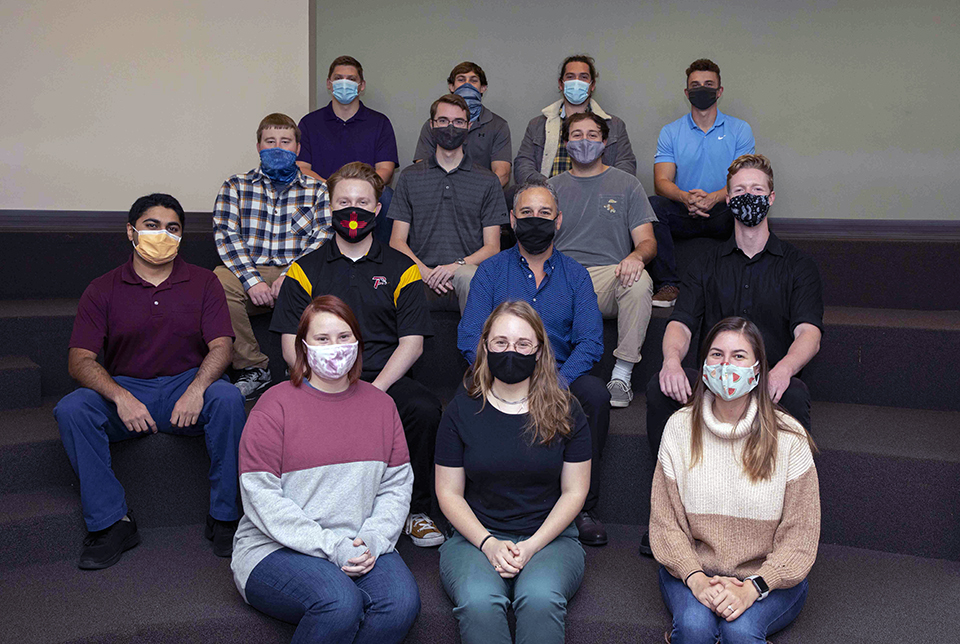
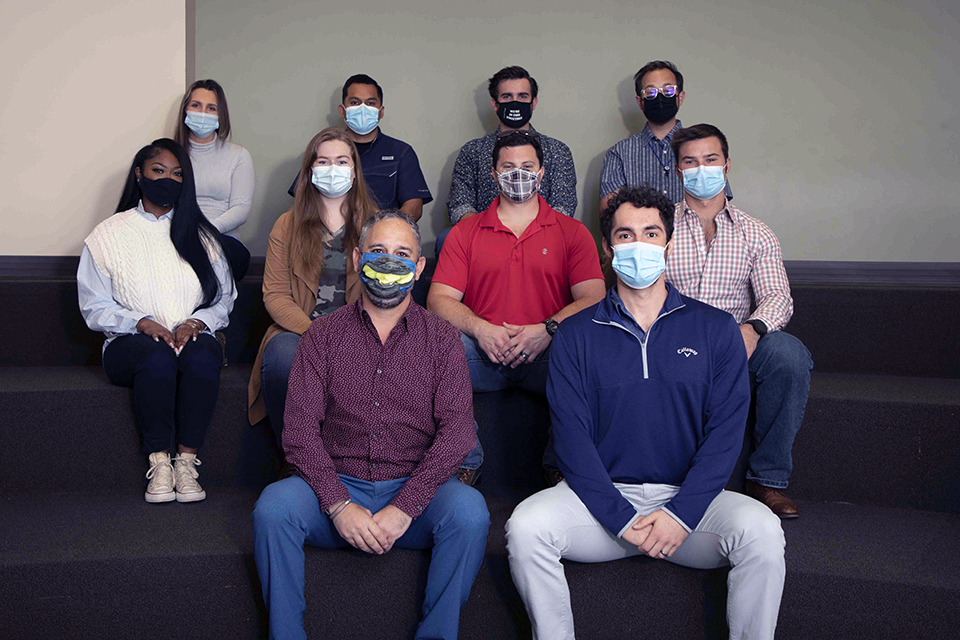
Career Opportunities for New Engineers, also known as Career ONE, is an engineering rotation and development program for Pantex and Y-12 engineers who have recently graduated.
The job rotation program gives the new employees the chance to rotate into different engineering programs at Pantex and Y-12. The rotations are available for the first two years of their career. Working in different engineering disciplines in 4- to 6-month increments allows them to gain insight into each field so they can better determine which career path is the best fit. Workshops and training sessions further expand their knowledge and technical skills. Plus, they have access to learn about unique manufacturing and processes.
Michael Ellis, Career ONE director, oversees the program. He believes that Career ONE engineers have a positive impact on the sites’ missions by bringing new perspectives and new eyes to the programs while they gain experience in the special work that takes place at the production facilities.
“This rotation program helps the newly hired engineers experience different areas within engineering. They get to learn about the job and what it means before being hired in that specific department of engineering permanently,” he said. “This year, we have 14 new engineers at Y-12 and five at Pantex. The program is not trial and error, as each of them have the opportunity to be hired full time after the rotation,” said Ellis.
Pantex started its Career ONE program with the help of Raquel Barrera-Chavez, section manager for civil, structural, and design engineers.
“Because of the value and the importance of the program, both to the engineers and the production facility, I volunteered to help Mike with Career ONE at Pantex. I know how much having a program like this would have helped me in understanding what I was walking into before I started, and it would’ve given me a better idea of what I’d be doing,” said Barrera-Chavez. “I wanted to be part of helping those after me have that option. Now I help set up the career rotations for the new hires.”
Barrera-Chavez is transitioning to a new role herself, civil, structural, and architectural manager for Projects Engineering. Steve Carter will be the new Pantex Career ONE contact.
There are several requirements to qualify as a Career ONE engineer. Julie Huff, senior director of Engineering Technical Operations at Y-12, said, “The engineers must have an accumulated GPA of 3.0 in order to be accepted into the program. Once they are hired, they are rotated in different engineering areas. A lot of times when people graduate, they are unsure of what specialty they want to do. By having the rotation program, they get to see what they enjoy, and it helps managers do a trial run to see who fits which group. This program is such a strong aspect to engineering at both sites.”
Previous Career ONE member Erika Delaney, now a weapons product engineer at Y-12, was hired in April 2018 and completed the program in 2019.
“I found out about the program when I attended the University of Tennessee’s career fair,” said Delaney. “Being a part of Career ONE was a great way to learn more about Y-12. I got to attend weekly meetings, network, make friends in my same area of interest, and I tested out different things that I might not have even considered before being a part of Career ONE.”
Once Delaney completed the program, she was able to give back by being a mentor for Career ONE. She is still an available contact to new classes.
Katie Romba, a Career ONE Class of 2020 grad and now a mechanical engineer in Y-12 Development, also learned about the program at her school. “I found out about the opportunity at the Clemson University career fair,” Romba said. “I love that this gave me the chance to see what department would be the best fit for me. It challenged me and helped me figure out how to complete projects on my own and learn how to take ownership of what I was doing.”
Romba completed the program with her husband, David, and they both remain a part of the group by attending meetings and serving as mentors for new members.
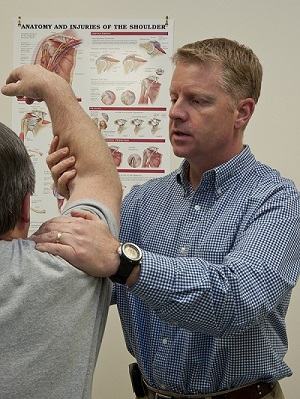
Shoulders are common problem spots for physical therapy patients. Y-12 physical therapist Gary Hall examines the arm of a client.
Not many employers offer on-site physical therapy, so let’s meet the LiveWise physical therapists and physical therapist assistants who help improve the health of Pantexans and Y-12ers.
For Y-12 physical therapist Gary Hall, sitting for long periods should come with a Surgeon General’s warning.
“Sitting is the new smoking,” he said.
The American Physical Therapy Association acknowledges people’s sedentary tendencies. The organization focuses on the importance of physical activity and how physical therapy helps people to move.
According to the organization, inadequate physical activity adds $117 billion annually in health care costs in the United States and results in reduced quality of life for millions of Americans.
“We are more sedentary than we have been,” said Pantex physical therapist Cody McClary. “We’re not getting out as much. We’re not walking with the dog or the family. We’re not exercising the ways we should. Exercise helps our muscles stay strong and loose.”
One reason for the reduced activity is the COVID-19 pandemic. It has changed how people live, which includes how they work. Like many companies across the country, teleworking from home has become the norm at Pantex and Y-12. This means many hours sitting at a desk, kitchen counter, or dining room table, staring at a computer screen. Or in Hall’s case, on the couch.
“One day I was at home teleworking,” he recalled. “I’ve got my laptop, knees hunched up. My wife walked in and said, ‘It’s a good thing no one can see you right now.’ To say the least, I was not at optimal positioning.”
Slumped shoulders while seated for work is an example of improper positioning.
“When you sit at the computer, the head naturally migrates towards the monitor,” Hall explained, “which causes the shoulders to round over. You have to pull your shoulders back. This will help strengthen the muscles between the shoulder blades.”
Rounded shoulders can cause back issues, neck pain, and rotator cuff problems.
“More Pantexans ask about their wrists and hands,” McClary said. “They are feeling numbness and tingling, pain in the wrist. It’s because of bad ergonomics.”
To help alleviate discomfort from extended sitting, the prescription is to simply move.
“Take as many breaks as you can,” McClary suggested, “This will help get the blood flowing.”
He also recommended stretching to help relieve the body. For the hands, McClary likes to use stress putty, while making a fist, then extending the fingers. Also rubber bands can be placed around fingers to create resistance, strengthening them.
For the shoulders and back, McClary advocates the “field goal” stretch, where the hands are placed on each side of a doorway, while slightly shifting the weight forward. Also helpful are big and small shoulder circles, forward and back.
In addition to helping people deal with teleworking aches and pains, the physical therapists are helping with those recovering from COVID-19.
“Many are COVID long haulers,” Hall said. “The main problem is deconditioning. They find out they are unable to do certain activities when they try to go back to their normal work routines. Everything doesn’t return at the same rate. There’s weakness in the trunk and spine. They’ve lost strength in the peripheral muscles in the arms and legs. Some have lost the ability to maintain a posture to even type.”
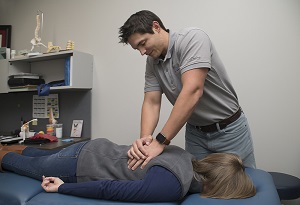
Pantex physical therapist Cody McClary applies pressure to a patient’s back to help alleviate discomfort.
McClary added, “The heart and lungs were so stressed [during the bout with the virus], walking from the parking lot is extremely difficult. I’m sure we’re going to see more and more patients with these issues.”
Also, the therapists may experience a surge in seasonal patients.
“Fall is big for physical therapy clinics,” Hall said. “People are very task focused doing yardwork, like raking and bagging leaves, and they think ‘I have this entire yard of leaves; I need to take care of it today.’ A lot of times they don’t use the proper mechanics and may not have the proper core strength, which causes them to strain something and overuse muscles.”
McClary added, “Core strength is the most important aspect of your body. The core is the first group of muscles activated when you do anything. It really needs to be the strongest muscle group. A strong core protects the discs and the nerve structures around those discs in the back and can prevent injuries.”
In addition to tackling ailments due to teleworking, COVID-19, and weekend activities, the physical therapists treat post surgical patients who have undergone such procedures as knee and hip replacements, carpal tunnel surgery, heart surgery, and more.
“It can take six months to a year to recover from a surgery,” McClary said. “That could include three or four months of therapy, maybe even six months.”
Physical therapy is a free service for employees at both sites. However, a medical referral is required to receive treatment. All physical therapy evaluations and appointments must be on the employee’s own time.
“Working with people is very cool,” Hall said. “It’s really gratifying when you can help patients achieve their best.”
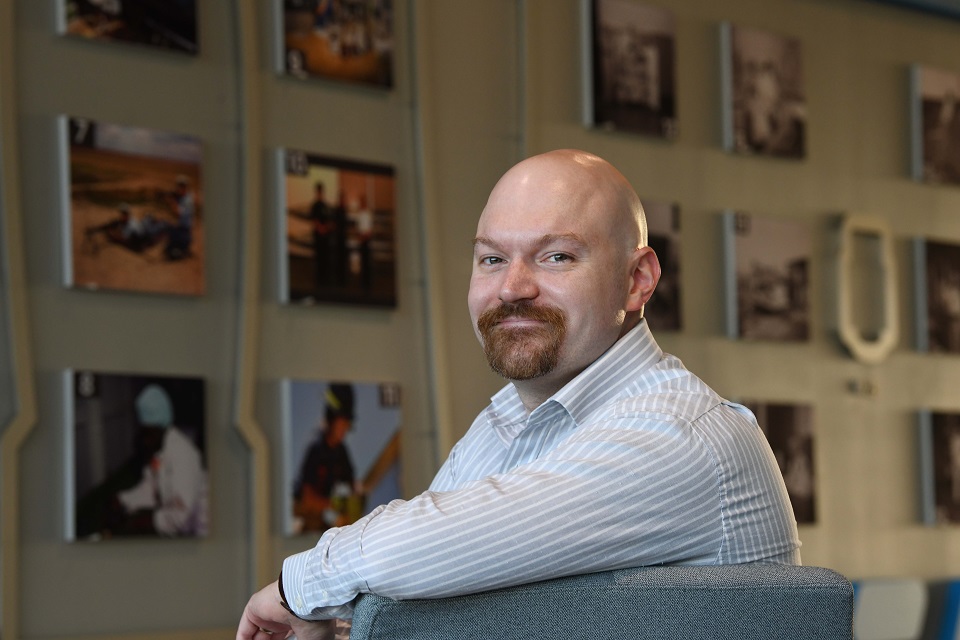
Pantexan Edward Graef and Y-12er Matthew Willard (not pictured) are part of the Sandia Weapon Intern Program, Class of 2022.
Two CNS employees are joining the ranks of the prestigious Sandia Weapon Intern Program (WIP) for the class of 2022. Edward Graef, Pantex physics senior specialist, and Matthew Willard, Y-12 process engineer, began the program in 2021.
Both Graef and Willard were excited about the program, saying it is considered by many within the Nuclear Security Enterprise to be a “once in a career” opportunity.
“I have had the opportunity to meet and work with so many other capable people at Pantex that it was humbling to know I was selected from among them for this opportunity,” Graef said.
“I was both humbled and excited about the opportunity,” Willard said. “It also comes with the realization that I am a representative of all of us here at Y-12.”
WIP was created by Sandia National Laboratories as a formal mechanism to pass decades of knowledge down to the next generation of scientists, engineers, and leaders. The year long program begins with classroom work and learning in the first six months, along with site visits, and research assignments. During the final months, participants are embedded in various organizations across Sandia to work on specific projects.
Both CNS participants were looking forward to learning from and working with other WIP interns and mentors from across the NSE.
“The collaborations will further expand my technical and leadership capabilities to better address our stewardship missions,” said Graef.
“One topic that I look forward to learning the most is about the lifecycle of the weapon systems,” Willard said. “Specifically, how DoD requirements turn into designs, those designs eventually become physical systems, and how those physical systems are assessed and certified throughout their lifetime so that they will function as intended if ever needed to.”
Over the course of the program, the interns will learn skills and knowledge that they’ll be able to bring back to their teams at Pantex and Y-12.
“I want to bring back a more refined set of communication skills and a better understanding of the NSE's needs for our evolving role in stockpile stewardship and safety,” Graef said. “For Pantex as a whole, I want to bring back clearer goals to advance our modeling and simulation-based engineering approaches to help address plant needs while also improving the safety and security of our workforce and the stockpile.”
Willard looks forward to the benefits of knowledge and professional relationships he will build. “Increased knowledge helps in understanding the ‘why’ when we may be asked to do things a certain way, that may be different from what we are used to being asked to do by our customers, and those relationships provide lines of communication throughout the NSE as we all continue our careers.”
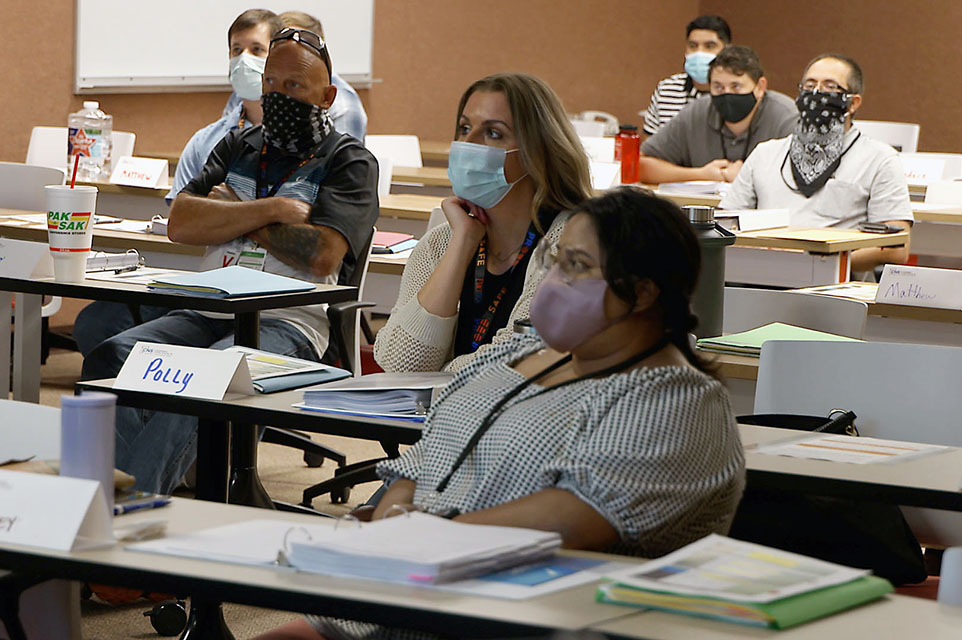
During a September Pantex onboarding session, new employees learn about the opportunities offered at Pantex and Y-12 and how all employees play a vital role in meeting the mission.
In new employee orientations, incoming Pantexans and Y-12ers are greeted with a simple, but vital message: Every single employee’s contributions are integral to securing the mission of national security. The mission is so important that one of the top priorities of the National Nuclear Security Administration is to continue building the workforce of the future.
Despite the ongoing global pandemic, CNS was able to surpass its hiring goal in FY 2021 due to innovative efforts by human resources, recruitment, hiring managers, and financial analysts. The goal for FY 2021 was to hire 1,277 CNS employees. Between Pantex and Y-12, 1,353 external hires were made.
How has the hiring process evolved?
While requisitions have continued to increase in the last 5 years, the new hiring process at CNS has made a significant difference in recruiting and onboarding top talent this past fiscal year. In 2019, the Human Resources Business Partnerships organization was created, which brought hiring managers, human resources, and financial personnel to the same table to proactively discuss hiring needs for each upcoming fiscal year.
“This new process dramatically changed how we approached hiring and recruitment within CNS,” said Amy Moran, HR strategy and operations director. “Instead of being reactionary, we are having proactive conversations with each organization to determine personnel needs and make sure hiring aligns with funding.”
Groups meet monthly to review metrics to determine whether hiring benchmarks are being met and, if not, what actions need to be taken to meet those benchmarks. The metrics include new hire data, terminations, attrition rates, and internal transfers. The system also takes into account the length of time it takes to recruit new employees, including security clearance time and onboarding training.
“Using the metrics gives us a springboard for conversation and a way to routinely measure if we are meeting our quarterly goals. There have been instances that being able to review this data together has helped us prevent personnel shortages when the unexpected happens,” said Heather Freeman, HR business partnerships director. “We’re able to pivot more quickly and update recruitment strategies in order to make sure our organizations have the resources they need.”
How are we recruiting new employees?
In the past, CNS often relied on in person job fairs, its career listing page, and recruiters reaching out to some potential candidates. Over the last fiscal year, recruitment for the next generation of nuclear security professionals has more aggressively moved to the digital space.
“We have made intense efforts on building our digital brand to recruit top talent for CNS,” said Amanda Hurley, recruitment and placement senior manager. “We’re using proactive recruiters, LinkedIn and Indeed’s recruitment tools, and applicant data tracking databases. Instead of waiting for top hires to find us, we are seeking them out.”
The most visible changes to our recruitment efforts can be found on the Pantex and Y-12 Careers sites, which were created through a partnership with a subcontractor.
How is this affecting CNS organizations?
A group that has seen a significant increase in hiring over the past few years is Y-12 Infrastructure. The organization holds nearly 1,100 employees, with more than 100 hires needed each year. Y-12 Infrastructure has had a dramatic increase in workload along with a heavy retirement wave. Andy Huff, Y-12 Infrastructure deputy manager, shared that the new hiring and recruitment process has made quite a difference for the organization — so much so that they have already met their hiring headcount for FY 2022.
“This new hiring process really comes down to a simple concept: speaking a common language. Human Resources came to the table and started proactively communicating, while being committed to finding a solution to a more efficient process,” Huff said. “This in turn has helped reduce overtime and has increased employee morale within our organization.”
The hiring growth over the last fiscal year was made possible through an enterprise wide effort. Thanks to current Pantexans and Y-12ers, the workforce of the future continues to be built day by day.
“We’re very proud of efforts made over the last year. From Occupational Health personnel fulfilling pre employment physicals at a record pace, to our hiring managers conducting highly efficient interview processes, we have grown our greatest asset: our people,” Moran said. “The mission is essential. We don’t have the luxury to not fulfill these needs, and everyone stepped up to the challenge.”
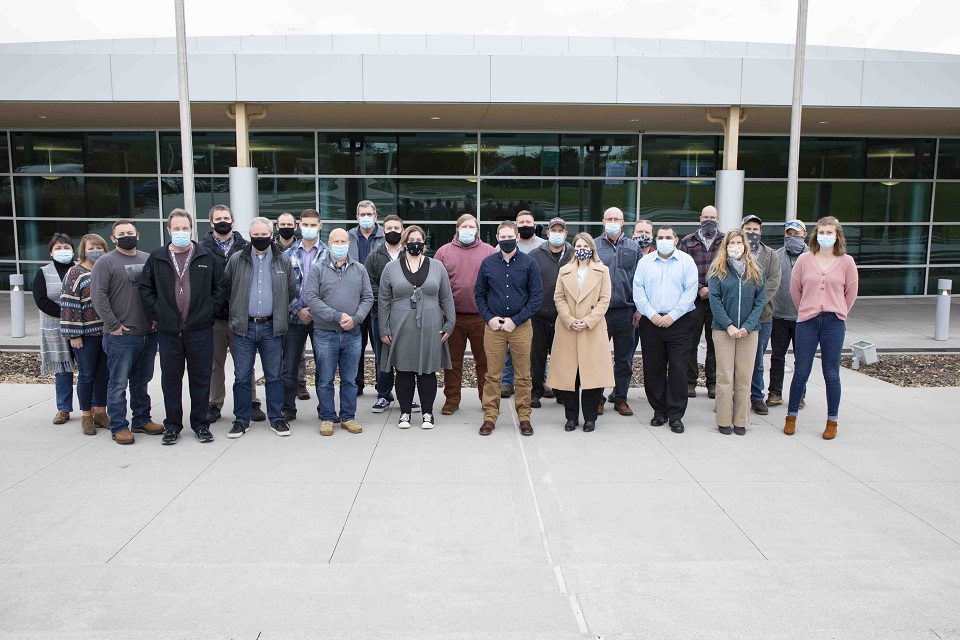
A November class of Y-12 new hires
